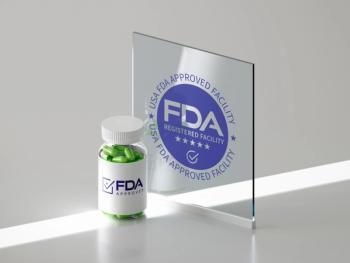
AUGS update: Clinical consensus statement on vaginal energy-based devices

This clinical consensus statement on vaginal energy-based devices (EBDs) reflects an update by content experts from the American Urogynecologic Society’s EBD writing group.
Developed by the Joint Writing Group of the International Urogynecological Association and the American Urogynecologic Society
ABSTRACT
This clinical consensus statement on vaginal energy-based devices (EBDs) reflects an update by content experts from the American Urogynecologic Society’s EBD writing group. In 2019, the American Urogynecologic Society’s EBD writing group used a modified Delphi process to assess statements that were evaluated for consensus after a structured literature search. A total of 40 statements were assessed and divided into 5 categories: (1) patient criteria, (2) health care provider criteria, (3) efficacy, (4) safety, and (5) treatment considerations. Of the 40 statements that were assessed, 28 reached consensus and the remaining 12 did not. Lack of evidence was among the main reasons that vulvovaginal EBD treatment statements did not reach consensus. In March 2022, these statements were reassessed using the interim literature.
In a July 2018 Safety Communication, the U.S. Food and Drug Administration (FDA) issued a public warning about the use of energy-based devices (EBDs) to perform vaginal rejuvenation or vaginal cosmetic procedures.1 The statement highlighted the imprecision of the term “vaginal rejuvenation” and emphasized that, although the FDA is aware that devices such as lasers are used for a variety of surgical applications, the agency has not approved their use for any specific gynecologic indication. Healthcare providers who subspecialize in female pelvic medicine and reconstructive surgery are positioned to evaluate and manage genitourinary syndrome of menopause (GSM) and vulvovaginal atrophy (VVA), and some of these clinicians deliver patient services using the EBDs that are discussed in the FDA Safety Communication. The vulvovaginal EBD devices that will be addressed in this document include laser and radiofrequency (RF) devices. Concurrent with the FDA’s Safety Communication, a December 2018 International Urogynecological Association Writing Group Opinion summarized the small but growing body of evidence as well as concerns about vulvovaginal EBD.2 This document explored evidence for the use of laser-based devices for GSM, vaginal laxity, and stress urinary incontinence (SUI). An International Continence Society/International Society for the Study of Vulvovaginal Disease Best Practice Consensus Statement published in February of 2019 concluded that, based on the currently available literature, laser is not recommended for routine treatment of vaginal atrophy or urinary incontinence unless treatment is part of a well-designed clinical trial or with special arrangements for clinical governance, consent, and audit.3 The American Urogynecologic Society (AUGS) found it timely to provide guidance by convening a panel of experts to compile a clinical consensus statement (CCS). In the absence of strong level I evidence, a CCS was created based on rigorous criteria to compile the most important agreed-upon expert opinion statements supported by the available literature as it pertains to the use of vulvovaginal EBDs. In contrast to clinical practice guidelines, which are based primarily on high-level evidence, CCSs are more applicable to situations where evidence is limited or lacking, yet there are still opportunities to reduce uncertainty and improve quality of care by providing evidence-based treatment approaches to care. Systematic reviews in the literature were considered as part of this document. Consensus was sought using explicit methodology to identify areas of agreement and disagreement. The AUGS writing group reassessed the literature between January and March 2022 and updated the CCS.
Patient Criteria: There is no evidence-based literature or guidelines that support the inclusion or exclusion of women from receiving EBD therapy.
Health Care Provider Criteria: There is no literature available reporting vulvovaginal EBD therapy outcomes based on physician specialty or level of training. Ultimately, the optimal health care providers are the gynecologists who are comfortable with vaginal conditions
Efficacy Outcomes: CO2 and Er:YAG have yet to show promise in the treatment of vulvovaginal atrophy, vaginal dryness, and menopausal dyspareunia.
Safety Outcomes: Based on short-term data, vulvovaginal EBD therapies have a favorable safety profile, but the longer sequelae of vulvovaginal EBD therapy are unknown.
Treatment Considerations: The optimal number of treatments, the effect of synergistic treatments such as estrogen, and the optimal maintenance therapy regimens using vulvovaginal EBD therapy for various indications need to be elucidated.
SUMMARY
Clinical consensus statements are largely reserved for practice guidelines that lack grade A level evidence in their support. All statements that did not reach consensus were because of lack of evidence (Table 4). The AUGS EBD writing group will continuously monitor the literature and reconvene to update this document as deemed necessary. The information from this CCS will facilitate clinicians’ efforts to educate and empower patients to engage in shared decision making with their care team, but much more research is needed. Ultimately, health care providers should continuously monitor emerging level I evidence to recommend therapies to patients. The health care providers and the patients will be at a disadvantage to make decisions without properly conducted research that shows clear long-term safety and efficacy. This CCS document will also be instrumental in educating the general AUGS audience about the current state of the art and the level of evidence available, and in identifying the knowledge gap as to what further studies are needed.
(Urogynecology 2022;28:633–648)
Click here to view the full-text article:
Newsletter
Get the latest clinical updates, case studies, and expert commentary in obstetric and gynecologic care. Sign up now to stay informed.











